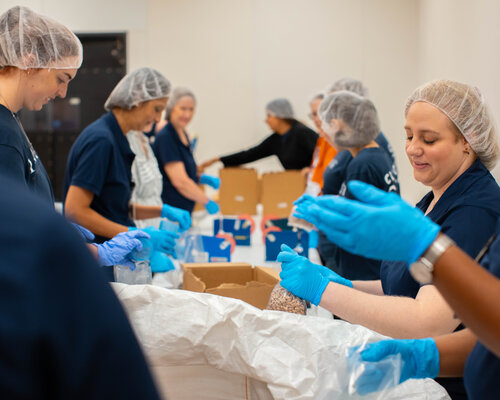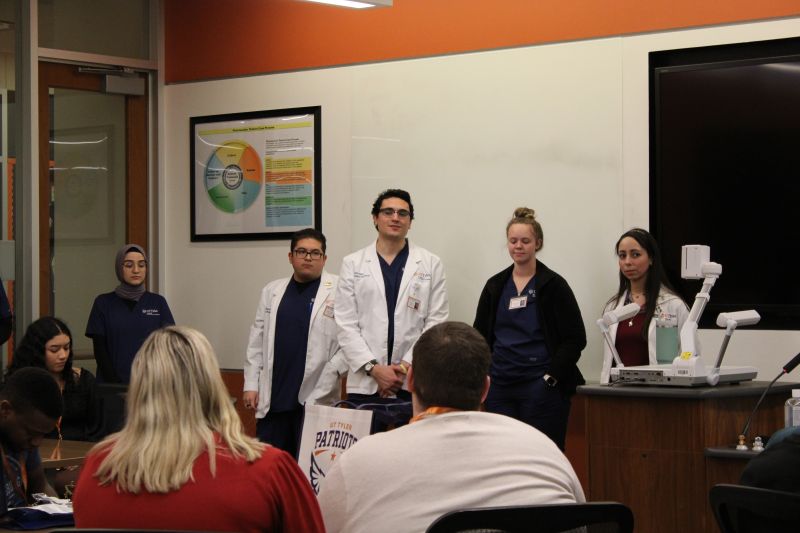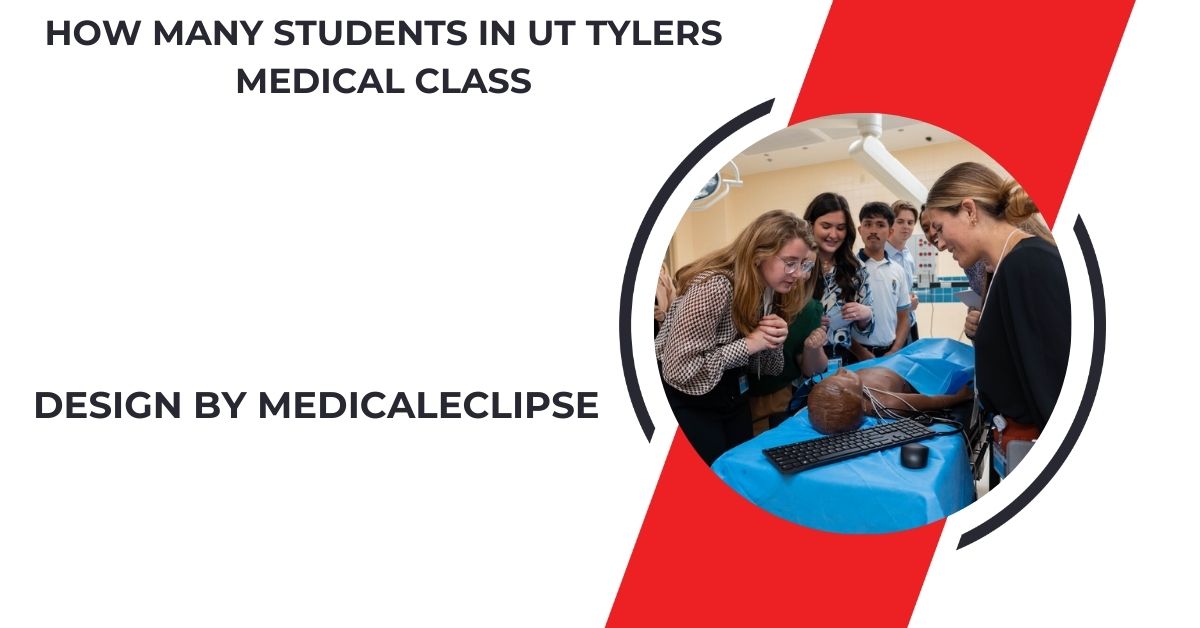UT Tyler’s medical class has about 60 to 70 students, creating a close-knit environment that enhances learning and mentorship.
In this article, we’ll explore the specifics of UT Tyler’s medical class size, the implications for students, and how this relates to the overall medical education landscape.
Overview of UT Tyler’s Medical Program:

UT Tyler offers a Doctor of Medicine (M.D.) degree through its College of Medicine, which aims to provide a comprehensive education that prepares students for various medical careers. The college emphasizes a hands-on approach to learning, integrating basic sciences with clinical practice from early in the curriculum.
Class Size and Composition:
As of the most recent data, the UT Tyler College of Medicine has approximately 60 to 70 students per medical class. This size is intentional, designed to foster a close-knit learning environment where students can engage with faculty and peers. Smaller class sizes are often associated with:
- Increased Interaction: Students benefit from more opportunities to engage directly with professors and receive personalized feedback. This interaction can enhance understanding and retention of complex medical concepts.
- Enhanced Learning Environment: A smaller cohort can lead to more collaborative learning experiences and group discussions. The intimate setting encourages students to voice their opinions and share diverse perspectives, enriching the overall learning experience.
- Better Support: With fewer students, faculty can provide more individualized support, which is particularly beneficial in a challenging field like medicine. This support can include academic guidance, career counseling, and assistance with research projects.
Implications of Class Size on Medical Education
The size of a medical class can significantly impact the educational experience. Here are several key considerations:
- Personalized Attention: Smaller classes allow for more one-on-one interactions with instructors, enhancing the mentorship opportunities crucial for medical training. Faculty can identify individual student needs and tailor their teaching methods accordingly.
- Community Building: A smaller student body fosters a sense of community, which can be invaluable in high-stress environments like medical school. Students often form study groups and support networks that help them cope with the rigorous demands of the curriculum.
- Diverse Perspectives: While UT Tyler’s class sizes are moderate, the diversity of backgrounds and experiences among students enriches classroom discussions and collaborative projects. This diversity encourages students to think critically and appreciate different viewpoints, which is essential for providing holistic patient care.
- Networking Opportunities: With fewer students, it’s easier to form meaningful connections with classmates and faculty, which can be beneficial for future career opportunities. These relationships often extend beyond the classroom, leading to collaborative research, internships, and job placements.
- Clinical Opportunities: Smaller class sizes can also lead to more hands-on clinical opportunities. Students may have better access to patients during rotations, allowing them to gain practical experience and build their clinical skills earlier in their training.
Also Read: What Is The Strongest Medical Marijuana Vape – The Strongest Brands for Fast Relief!
Comparing UT Tyler with Other Medical Schools:
When comparing UT Tyler’s class size to other medical schools in Texas and across the nation, it’s essential to consider the average class size in the medical education landscape. Many medical schools have larger classes, often ranging from 100 to 200 students per year. This can create a very different learning environment, often requiring more structured interactions between students and faculty.
Larger Schools:
Institutions like the University of Texas Southwestern Medical Center and Texas A&M University College of Medicine typically have larger classes. While these schools offer excellent programs, the larger class size may mean less individualized attention for students. In larger classes, students may find it challenging to establish rapport with professors, which could impact their overall educational experience.
Smaller Schools:
On the other hand, some private institutions may have even smaller classes, which can lead to a highly personalized educational experience but may also come with a higher tuition cost. Students considering these options should weigh the financial implications against the benefits of a smaller class size.
The Importance of Class Size in Medical Education:

Ultimately, the class size of a medical school like UT Tyler plays a crucial role in shaping the educational experience. Here are a few reasons why prospective students should consider class size when applying to medical schools:
- Learning Style: If you thrive in collaborative, discussion-based environments, a smaller class size may be beneficial. Students who prefer direct interaction with peers and professors will find the atmosphere at UT Tyler conducive to their learning styles.
- Support System: A close-knit group can offer emotional and academic support, helping students navigate the challenges of medical training. This support can be particularly important during stressful periods, such as exam preparation or clinical rotations.
- Long-Term Relationships: Smaller classes may lead to stronger relationships with faculty, which can be valuable for mentorship and recommendations during residency applications. Faculty who know their students well are more likely to write compelling letters of recommendation that highlight individual strengths and achievements.
Student Experiences at UT Tyler
To better understand the impact of class size on the educational experience at UT Tyler, it’s helpful to hear from current students. Many students express appreciation for the supportive environment fostered by smaller class sizes. They often highlight:
- Mentorship Opportunities: Students report that faculty are accessible and willing to invest time in their development. This mentorship extends to research opportunities, where professors often involve students in their projects.
- Collaborative Learning: Students frequently engage in group projects and study sessions, benefiting from diverse perspectives and collaborative problem-solving.
- Community Engagement: The close-knit environment encourages students to participate in community service and outreach programs, further enhancing their medical education.
FAQ’s
- What is the class size at UT Tyler’s medical program?
The class size is about 60 to 70 students.
- How does class size benefit students?
It allows for increased interaction with faculty and personalized support.
- What are the implications of smaller classes?
Smaller classes foster community, enhance mentorship, and improve networking opportunities.
- How does UT Tyler compare to other medical schools?
UT Tyler has a smaller class size compared to many schools, which often have 100 to 200 students.
- What do students appreciate about UT Tyler’s program?
Students value the supportive environment, collaboration opportunities, and accessible faculty.
Conclusion
Understanding the class size at UT Tyler is crucial for prospective medical students. With about 60 to 70 students per class, the program fosters a supportive environment that enhances personalized learning and engagement. As you explore medical school options, consider class size alongside curriculum, faculty expertise, and campus resources to find your ideal fit.

Leave a Reply